
Combining Welles Wilder's RSI, ADX and SAR Indicators
THREE TIMES WILDER: RSI, ADX AND SAR COMBINED
Many swing traders have applied RSI, ADX and Parabolic SAR to their stock chart analysis. What they may not realize, is that all of these indicators were designed by one individual: J. Welles Wilder Jr.
Welles Wilder is arguably one of the greatest technical analysts of the late 20th century. His quest as a trader was to define mathematical formulas that would lead to profitable trading systems. In his book New Concepts in Technical Trading Systems (ISBN #0-89459-027-8), Wilder created six indicators for use in trending and non-trending markets. All of these indicators were original and were designed as stand-alone trading systems. The ones which have achieved the greatest popularity are RSI, ADX and Parabolic SAR. These are included in virtually every technical analysis software package I have examined as well as technical analysis web-sites of any sophistication.
In the next Inside The Black Box, I plan to start a detailed series on the work of Welles Wilder, beginning with RSI -- the easiest of the three indicators to grasp. From there I will go on to ADX. The rationale behind ADX is very complex and detailed. Tracing Wilder's logic is, in itself, a learning experience about market behavior. I have also found a number of original ADX visual patterns that I will share with subscribers at that time. Finally, we will analyze Parabolic SAR, and learn how it provides a helpful way to set stop losses.
Since I will later be analyzing each of these indicators in depth, to introduce them I will just provide thumbnail sketches, with a focus on the trading signals they provide. I will then comment on how synthesizing the message of the three can add to their value. The analysis will be applied to Intel (INTC, $24.16) a stock in our portfolio.
Most readers of the Swing Trader are familiar with RSI or the Relative Strength Index. The calculation of this indicator compares the average of up and down closes over a specific time usually 14 periods (a period can be an hour, day, week etc). RSI works primarily as an oversold/overbought indicator. A stock is oversold when it reaches the 30 level or goes below it. It is overbought when RSI exceeds 70. Stocks can stay oversold or overbought for long periods of time. Therefore, if RSI has crossed the 30 or 70 "boundary", no action should be taken until it has re-crossed it in the opposite direction. For example, if RSI falls below 30, do not buy until the indicator has come back above that level.
As with many overbought/oversold indicators, an important signal is given by bearish or bullish divergence. Bullish divergence occurs when RSI approaches 30 and begins to rise even though price continues to decline. That tells the trader the momentum of the decline is decreasing. Bearish divergence happens when RSI approaches 70 and the indicator begins to decline even through price is rising.
The 50 level is also important in RSI analysis. That is where the up vs. down closes in the indicator are in equilibrium or balance. Crosses below 50 indicate a weakening of the stock and those above 50 signify strengthening.
In New Concepts, Wilder implied that he considered ADX his master achievement to that time. ADX stands for average directional index. It is an indicator which is not easily or intuitively grasped. As a result, most traders find it puzzling and do not use it. One major function of ADX is to determine whether a stock should be traded using a trend-following or non-trend-following approach.
The ADX indicator consists of three lines +DI (green), -DI (red) and ADX itself (black). When ADX is below 20, it shows the lack of a clear trend. Trend-following systems such as moving averages should not be used as they will give alternating buy and sell signals or "whip-saws" causing losses. When ADX crosses above the 20 line, it is time to employ trend-following systems. When the ADX line reaches 40, it is warning that the stock is becoming overbought. When the ADX line itself peaks above that level, it is usually time to start nailing down profits.
The ADX buy signal is given when +DI crosses above –DI. I find the signal should generally be disregarded if +/- DI cross and re-cross in rapid succession. After a crossover, if the black ADX line crosses 20, it is a strong sign of an emerging trend. The sell signal is the reverse. Although ADX gives signals later than other indicators, such as stochastics or CCI, what it lacks in speed it makes up for in reliability.
Parabolic SAR is an indicator I use regularly, but have not displayed in previous Swing Trader issues because it can make moving averages hard to detect. The SAR stands for stop and reverse. It is called Parabolic SAR because the dots below and above the candles take the shape of a parabola or French curve. When the dots are below a stock's price the swing trader should be long. Conversely, when they go above its price, the swing trader should reverse his or her position and go short. With SAR, the trader always has a position in the market. SAR, however, will create whip-saws during periods of consolidation and its messages should not be traded on exclusively. Wilder also comments that if ADX is on a buy signal, only the long signals in SAR should be acted on.
SAR is designed to keep stop-loss levels rising as a stock's price hits new highs in an uptrend. This is because of a mathematical formula called an "acceleration factor", which raises the stop as the trend matures, thereby locking-in profits. Note that at the beginning of a trend, when the dots are below the stock price, they are close together. As the trend extends over time, they are further apart, reflecting that the stop-loss moves to ever-higher levels.
These thumbnail sketches will be expanded in detail in future newsletters. Applying the three indicators to Intel, several observations can be made. In the period from September 7th to 27th, RSI showed bullish divergence as Intel's price went lower, but RSI bounced off the oversold 30 level and rose. This bullish divergence warned the worst of the downtrend was over. Around September 20th, SAR gave a buy signal when the dots went below share price, but this signal should have been ignored since ADX remained on a sell signal.
Through early October to about October 18th, Intel was stuck in sideways consolidation. Note the frequent whip-saws in both ADX and SAR. RSI consolidated near the 50 line, reflecting the equilibrium of up and down closes in price. During this time, there were no clear trend-following signals available and trend-following systems should have been avoided.
That picture changed just after October 18th. Near that time, in rapid succession, ADX gave a buy signal. The parabolic SAR dots went from below the share price to above. RSI broke out above the 50 level and stayed there. In the next several days, the black ADX line began to slope upward from under 20, a sign of a strengthening uptrend. In classical technical analysis terms, the stock neared completion of a multi-month basing pattern. Strong positive signals were given near the end of October, when the black ADX line rose above 20, and the stock completed its basing pattern just above $22.
What trading guidance do the three indicators now provide? First, the stock is very overbought. ADX is at 39, just below the critical 40 level. RSI hit 79 on Thursday, before dropping to 67 the next day, showing INTC's retreat from a very overbought state. The SAR dots are still below the stock's price, so INTC should be held long from the perspective of this indicator. But note how the dots are getting very close to the share price. SAR says that if Intel falls below $23.69, then profits should be taken. A short position should not be established, since ADX is still on a buy signal.
Although Wilder does not himself suggest combining RSI, ADX and SAR, synthesizing their messages makes them that much more powerful. One might say that they are three times wilder than before.
Good trading!















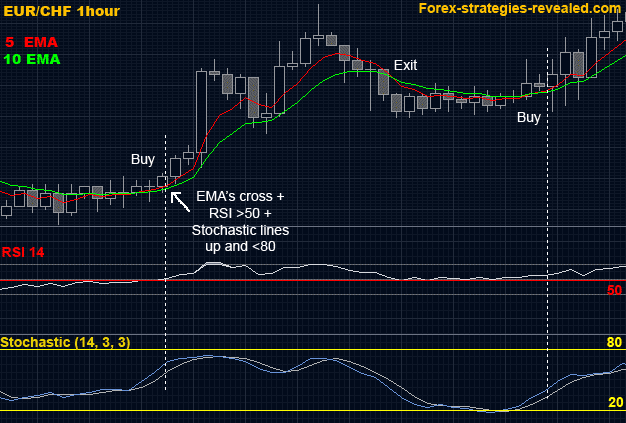
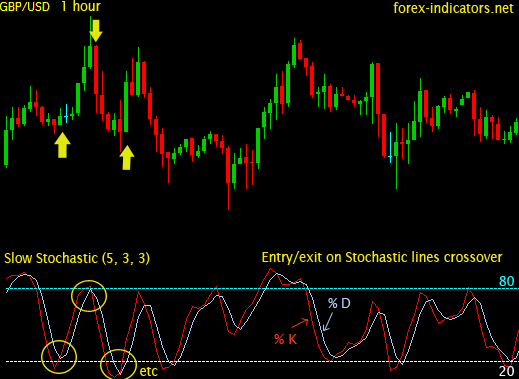
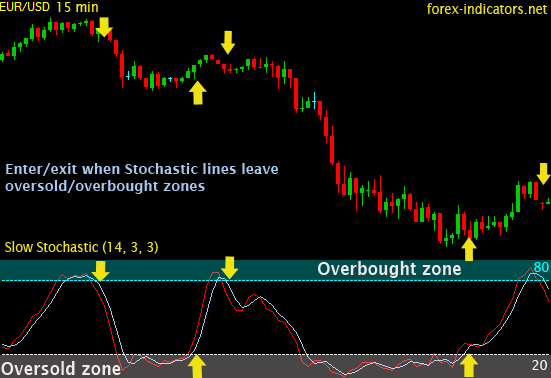
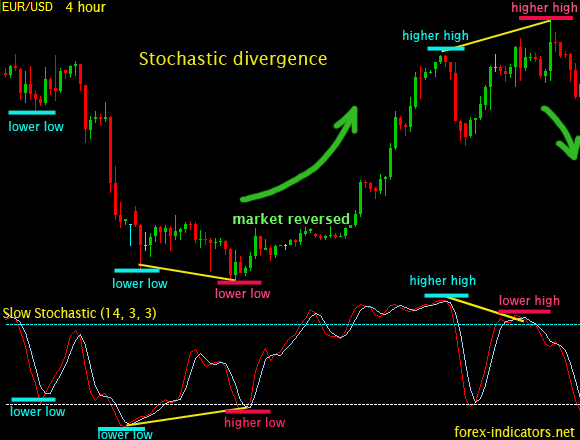
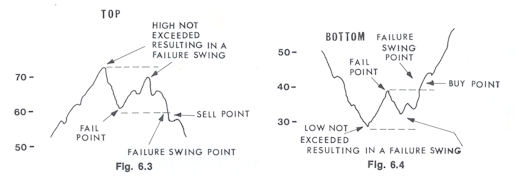






 The first wave is usually a weak rally with only a small percentage of the traders participating. Once Wave 1 is over, they sell the market on Wave 2. The sell-off in Wave 2 is very vicious. Wave 2 will finally end without making new lows and the market will start to turn around for another rally.
The first wave is usually a weak rally with only a small percentage of the traders participating. Once Wave 1 is over, they sell the market on Wave 2. The sell-off in Wave 2 is very vicious. Wave 2 will finally end without making new lows and the market will start to turn around for another rally.


 The Wave 3 rally picks up steam and takes the top of Wave 1. As soon as the Wave 1 high is exceeded, the stops are taken out. Depending on the number of stops, gaps are left open. Gaps are a good indication of a Wave 3 in progress. After taking the stops out, the Wave 3 rally has caught the attention of traders.
The Wave 3 rally picks up steam and takes the top of Wave 1. As soon as the Wave 1 high is exceeded, the stops are taken out. Depending on the number of stops, gaps are left open. Gaps are a good indication of a Wave 3 in progress. After taking the stops out, the Wave 3 rally has caught the attention of traders. The traders who were stopped out (after being upset for a while) decide the trend is up, and they decide to buy into the rally. All this sudden interest fuels the Wave 3 rally.
The traders who were stopped out (after being upset for a while) decide the trend is up, and they decide to buy into the rally. All this sudden interest fuels the Wave 3 rally.
 There is only one pattern in a simple correction. This pattern is called a Zig-Zag correction. A Zig-Zag correction is a three-wave pattern where the Wave B does not retrace more than 75 percent of Wave A. Wave C will make new lows below the end of Wave A. The Wave A of a Zig-Zag correction always has a five-wave pattern. In the other two types of corrections (Flat and Irregular), Wave A has a three-wave pattern. Thus, if you can identify a five-wave pattern inside Wave A of any correction, you can then expect the correction to turn out as a Zig-Zag formation.
There is only one pattern in a simple correction. This pattern is called a Zig-Zag correction. A Zig-Zag correction is a three-wave pattern where the Wave B does not retrace more than 75 percent of Wave A. Wave C will make new lows below the end of Wave A. The Wave A of a Zig-Zag correction always has a five-wave pattern. In the other two types of corrections (Flat and Irregular), Wave A has a three-wave pattern. Thus, if you can identify a five-wave pattern inside Wave A of any correction, you can then expect the correction to turn out as a Zig-Zag formation.